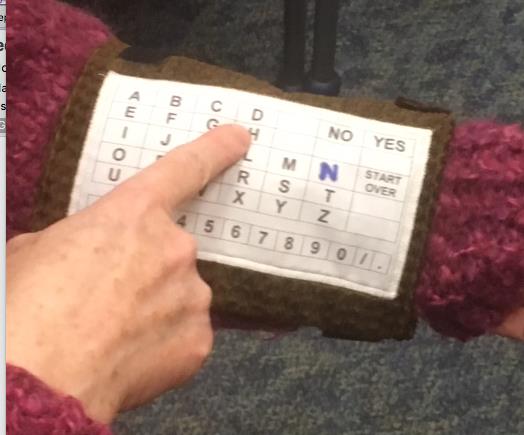What is letter cueing?
Your partners may interpret your speech intelligibility as clearer if you identify the first letter of the word you are speaking. This strategy, known as letter cueing, may provide additional context to your audience, allowing them to quickly understand your speech.
What to do: If your communication partner does not understand a word, use an alphabet board to point to the first letter of the target word AS you are speaking the word.
Letter cueing displays can be organized in many different ways. Below are a few examples:
QWERTY format
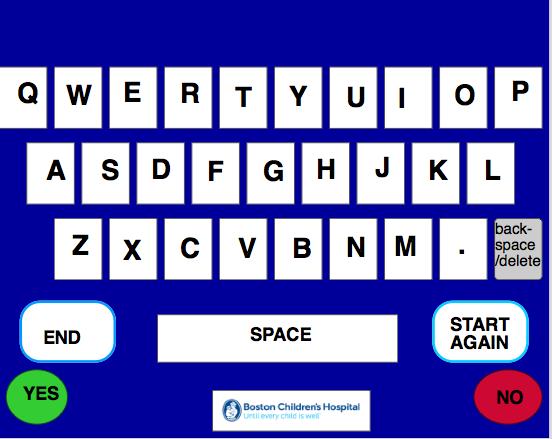
QWERTY format with consonant blends
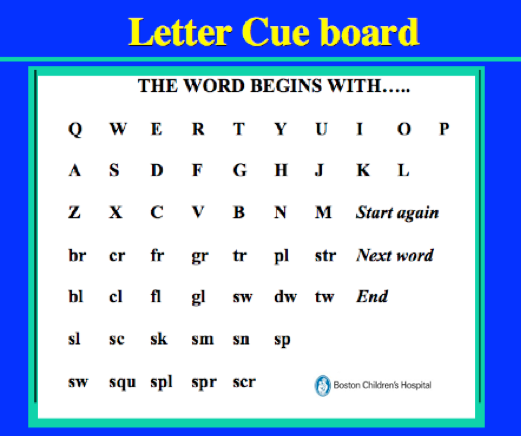
Alphabetical organization
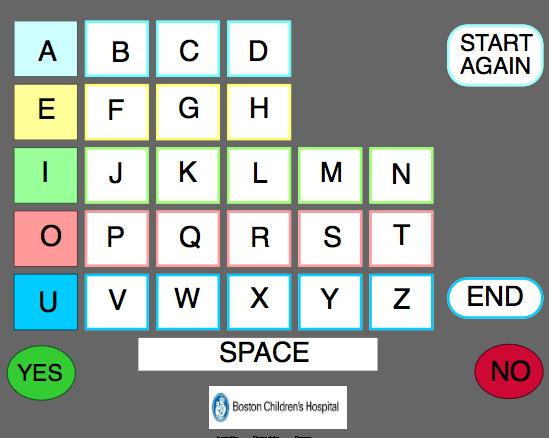
Topic Cueing
Sometimes just knowing the topic can provide enough context to make a word or phrase understandable when it is not spoken clearly. Using a topic cue board, one may point to the general topic prior to speaking. This gives your communication partner a frame of reference when listening to you speak, making it easier to interpret speech that is not completely clear.
Below, is an example of a generic topic cueing board. A topic cueing board should feature some generic topics, but should also include topics that are very specific to you (not the topics in blue on example)
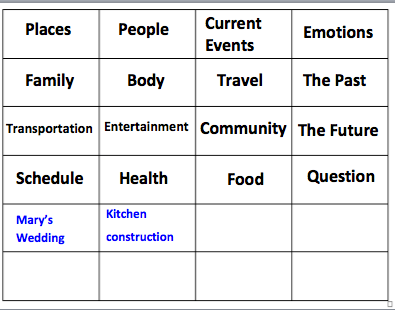
Many people have a letter cue board with a topic cue board on the other side so it is easy to provide both cues during a conversation.
Example of a ring we have in clinic with different size letter cueing boards with topic cueing boards on the back side. This allows us to quickly try different size targets/displays in clinic and then give someone the appropriate display to trial at home.
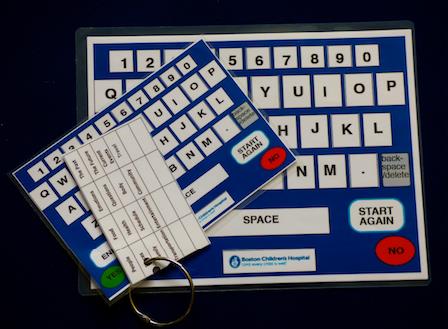
Work with a speech language pathologist and an occupational therapist to determine the best layout positioning and best physical access/positioning to a letter cue or topic cue display. Example of a letter cueing chart made as an arm sleeve, below.
